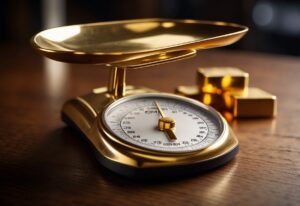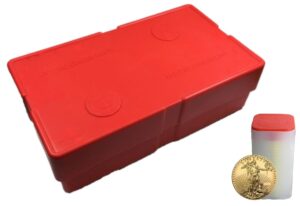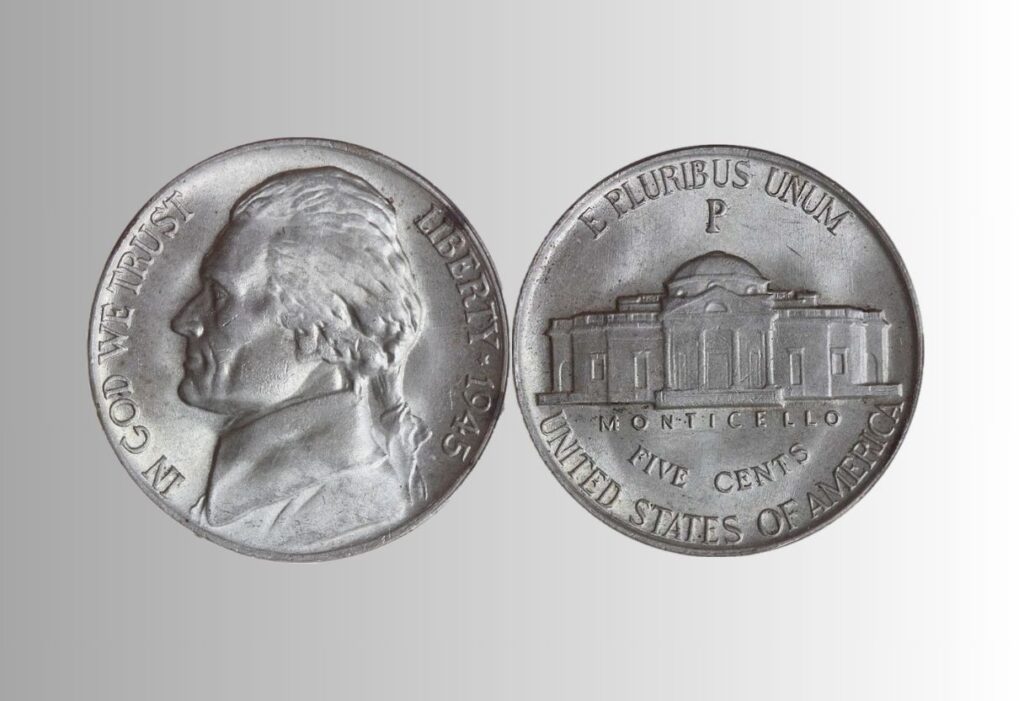
What Nickels are Silver?
The journey of the United States small coinage has been shaped by both necessity and innovation. From the first five-cent pieces known as half dimes, which were part of the early silver coins struck following the establishment of a national mint, to the introduction of the nickel in the 1860s, the quest for practical currency has never ceased.
Transitioning to a copper-nickel alloy for the five-cent coin was a direct result of the rising cost of silver. This demonstrates the U.S. Mint’s ability to adapt to economic changes.
The outbreak of World War II brought about a significant shift in the materials used for U.S. coinage. With nickel playing a critical role in the war effort, the U.S. Mint obtained authorization to alter the nickel’s composition, introducing a blend of copper and silver.
Chosen for its compatibility with vending machines and necessary wartime commoditization, this temporary change created a unique chapter in the history of U.S. coinage, one where silver reclaimed a place in the composition of everyday pocket change.
Key Takeaways
- The U.S. Mint’s adaptation to silver price inflation in the 1860s led to the creation of the copper-nickel five-cent piece.
- World War II’s demands necessitated a temporary return of silver in nickels to preserve nickel for military manufacturing.
- These silver-copper-manganese nickels from the wartime era serve as collectibles and represent a historical modification in U.S. coinage.
Coinage Aesthetics
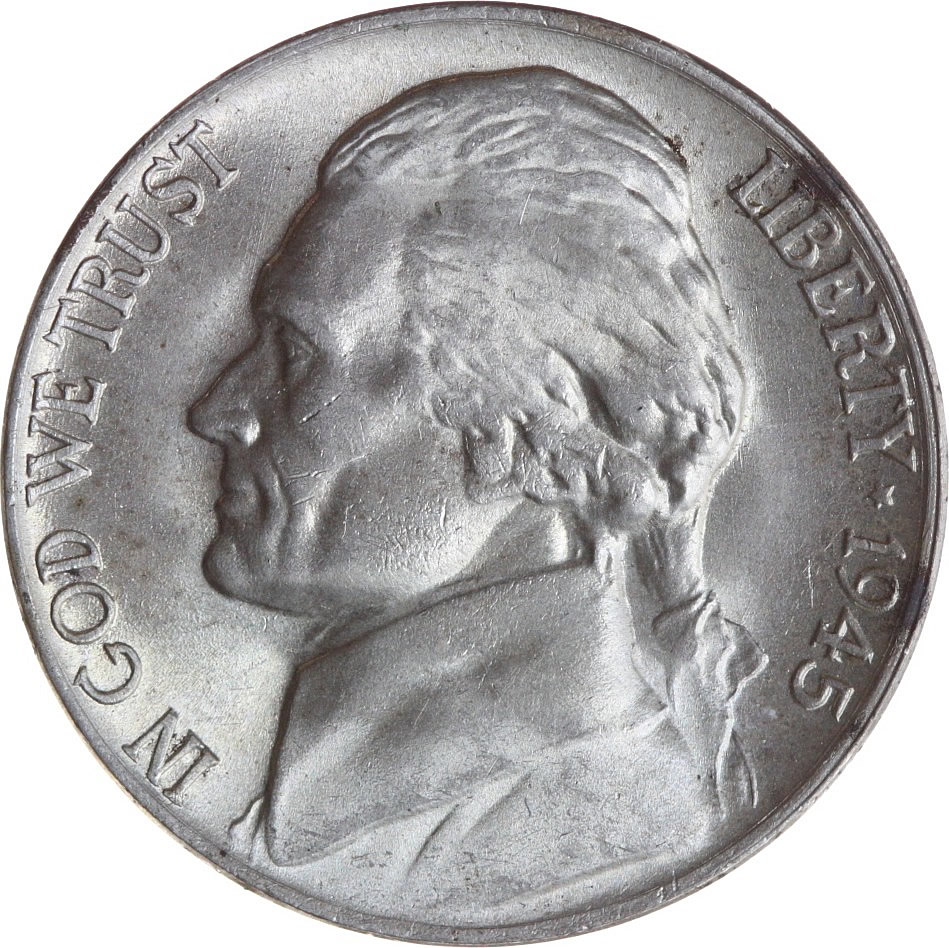
The Jefferson Nickel emerged in 1938, marking a fresh portrayal of the nation’s third president on the popular five-cent piece. It bid farewell to the less favored Buffalo Nickel and introduced an image that celebrated an upcoming milestone — the 200-year anniversary of Thomas Jefferson’s birth.
They opted for a design contest to find the fitting tribute, which ultimately crowned Felix Schlag, a German-American artist, as the victor with his rendition inspired by an esteemed Houdon sculpture.
On this coin’s face, one can observe Jefferson gazing leftward, surrounded by the phrase “In God We Trust” and the word “Liberty,” closely followed by the year it was minted.
Turning the coin over, Jefferson’s esteemed abode, Monticello, sits majestically, encapsulated by the nation’s motto and the coin’s value, beneath the proud declaration of the United States of America.
It’s worth noting that between 1942 and 1945, amidst global conflict, the minting locales in Philadelphia, Denver, and San Francisco adjusted their blend. The alloy shifted to a unique composition inclusive of 35% fine silver, stamped with a ‘P’, ‘D’, or ‘S’ above Monticello to denote the source, diverging from the usual nickel-copper makeup.
Curiously, Schlag’s initials were absent from his initial design due to an oversight and were not included until several decades later in 1966, becoming a staple feature of the nickel. In 2004, coin collectors witnessed the end of this classic artistic representation when the U.S. Mint retired Schlag’s vision in favor of a new series.
Duration of Silver Alloy in Nickels

During the years of U.S. involvement in World War II, from 1942 to 1945, a unique composition was used for minting nickels. These coins contained:
- 35% silver
- 56% copper
- 9% manganese
This mixture was essential as nickel was a critical resource for the war effort, leading to its rationing.
Consequently, nickels from this period are often referred to as ‘War Nickels.’ The presence of silver in the coins was not only symbolic for the American citizens, contributing to war material needs, but also practical in freeing up nickel for military use.
In 1942 specifically, two types of nickels were produced: a regular issue and the special silver-containing Type 2 Nickel. After World War II ended and the demand for nickel subsided, these silver-containing nickels were gradually withdrawn from circulation, and production reverted to the standard copper-nickel alloy in 1946, enhancing national morale and signifying a return to normalcy.
Value of Silver Nickels

Silver nickels, particularly those from the wartime era, tend to be more prized than their melt value might suggest. Often, their worth is tied to numismatic factors rather than the spot price of the precious metal.
For coin collectors and numismatists, condition plays a significant role in determining value. Uncirculated coins, which have not been used in general circulation, typically fetch high prices.
- Junk silver refers to silver coins with no collectible or numismatic value beyond the actual silver content.
- An uncirculated, well-preserved silver nickel bearing “Full Step” features can be immensely valuable, occasionally selling for tens of thousands.
- Dealers and investors are usually on the lookout for these valuable coins due to their potential for high returns.
The term “Full Step” is a quality indicator for the visibility of the architectural details on such coins.
How to Identify Silver Nickels?
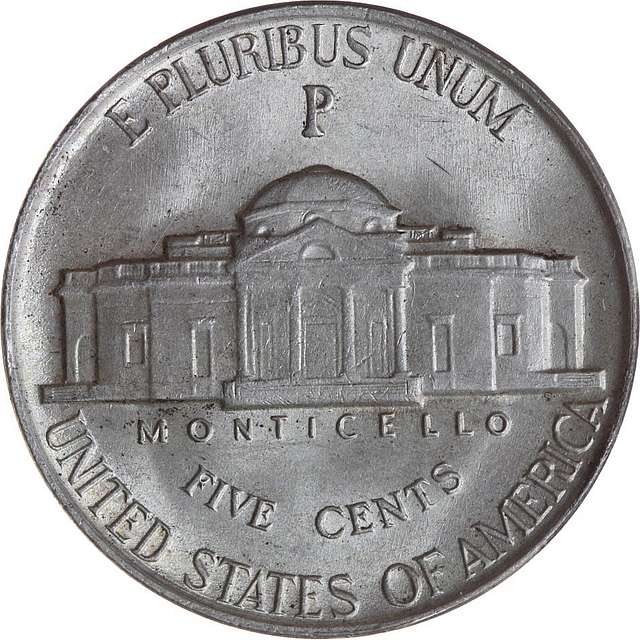
To spot silver nickels, one should check the mint year and search for dates between 1942 to 1945, as these have a distinct mixture of copper, silver, and manganese. Here’s a quick guide:
- Mint Year: Look for nickels minted from 1942 to 1945.
- Silver Content: These contain 35% silver, known as silver war nickels.
- Mint Marks: Unique identifying mint marks placed above Monticello on the reverse side.
- Magnetism Test: Silver content means they are not magnetic.
These distinctive five-cent coins were made during a time when Nickel was in high demand for the war effort, resulting in their unique composition and marks.
American Silver Coinage

In the United States, several coin types made of silver have been produced, notably before 1965, after which silver was no longer used in regular currency due to its high value. Collectors typically refer to these silver-based coins as regular coins, sentimental for their metal rather than rarity.
Dimes:
- 1892-1916: Named after designer Charles E. Barber, Barber Dimes saw circulation.
- 1916-1945: The iconic Mercury Dimes, recognized by Lady Liberty donning a winged cap, were minted.
- 1946-1964: Roosevelt Dimes featured the former president.
Quarters:
- 1892-1916: Barber Quarters share the same namesake as the dimes.
- 1916-1930: Standing Liberty Quarters had a brief minting era.
- 1932-1964: People commonly used Washington Quarters in transactions.
Half Dollars:
- 1892-1916: Barber Half Dollars, another part of the Barber series.
- 1916-1947: The Walking Liberty Half Dollars are admired for their artistic design.
- 1948-1963: Franklin Half Dollars portrayed founding father Benjamin Franklin.
- 1964: Kennedy Half Dollars entered circulation shortly after JFK’s assassination, comprising 90% silver.
Silver Dollars:
- 1878-1921: Morgan Silver Dollars, primarily minted in the late 19th century and early 20th century, were widespread.
- 1921, 1928, 1934-1935: Peace Silver Dollars signified peace after World War I.
From 1965 to 1970, the Kennedy Half Dollars contained 40% silver, a lower proportion than their predecessors. These coins, often acquired in bulk by investors, are valued more for their silver content than as collectibles and are a common way to hold physical silver for portfolio diversification.
Frequently Asked Questions
Silver Content in Nickels During Specific Years
During the war-effort period from 1942 to 1945, five-cent pieces were uniquely composed of 35% silver. This shift was due to the critical demand for nickel and copper in the manufacturing of military supplies. These particular coins are often known as wartime nickels.
Presence of Silver in 1964 Nickels
Contrary to some beliefs, the nickels minted in 1964 lack any silver content. They reverted back to their traditional makeup of 25% nickel and 75% copper, following the special wartime coinage period.
Conclusion of Silver Nickel Production
The production of silver-containing nickels ceased in 1945 with the end of World War II. Consequently, the production of nickels with the pre-war composition of nickel and copper resumed.
Valuation of Silver Nickels
Some collectors may highly prize wartime silver nickels, and their value can vary significantly. A key factor affecting value includes mint marks, particularly those from San Francisco or Philadelphia.
For instance, a well-preserved coin from this era, notably with clearly defined architectural details, can fetch substantial sums.
Silver Quantity in Wartime Nickels
Wartime nickels coined during the window of 1942-1945 include 35% silver as part of their composition, paired with 56% copper and 9% manganese. This makeup was a temporary measure taken during the intensive years of the Second World War.
Common Questions About Silver Nickels
Identifying Silver Nickels
To determine if a nickel is composed of silver, one should look for nickels minted during wartime, specifically from 1942 to 1945. These coins can be identified by a large mint mark above the dome of Monticello on the reverse side. They bear a “P,” “D,” or “S” mint mark and contain 35% silver.
Collectible Nickels from the War Years
Nickels produced between 1942 and 1945, commonly known as “War Nickels,” are especially collectible if they are in good condition or have lower mintages. Coins with error markings or those in uncirculated condition can attract collectors.
Silver Content in Buffalo Nickels
Buffalo nickels, minted from 1913 to 1938, do not contain silver. The composition consists of 75% copper and 25% nickel.
Nickel Silver Content After 1964
Nickels produced post-1964 do not contain silver. They reverted to the pre-war composition of 75% copper and 25% nickel following the end of the silver-alloy ‘War Nickels.’
The Worth of a 1964 Nickel
A standard 1964 nickel, made of copper and nickel, typically holds its face value. Exceptions include rare error coins or those in exceptional condition, which may be more valued by collectors.
Searching for Silver Nickels
Collectors seeking silver nickels should concentrate on finding nickels minted from 1942 to 1945. These specific “War Nickels” are the only ones in the series that contain silver.
These brief pointers should guide collectors in identifying and understanding the value and composition of various nickels. Notably, those with silver content.
